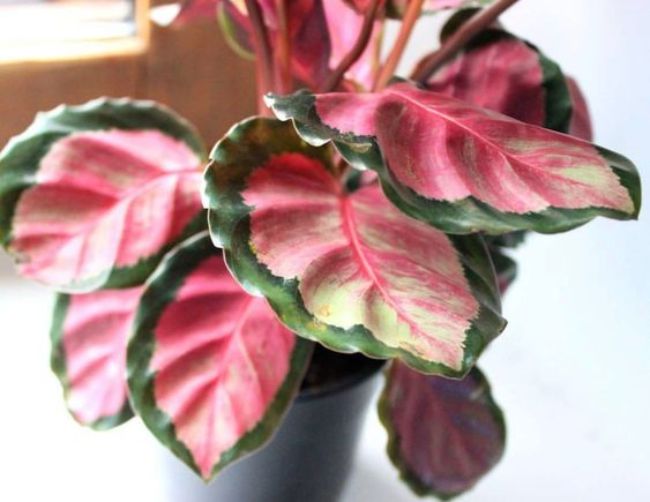
Source smartgardenguide.com
Welcome to our comprehensive guide on Calathea Roseopicta care. If you’re looking to add a touch of tropical beauty to your home or office space, these stunning plants are a perfect choice. Known for their striking foliage and vibrant colors, Calathea Roseopicta, also known as the Rose Painted Calathea, requires specific care to thrive.
In this article, we will explore essential tips and tricks to provide your Calathea Roseopicta with the ideal conditions for healthy growth and long-lasting beauty. From light and humidity requirements to watering and fertilizing techniques, we’ve got you covered. Let’s dive in!
1. Finding the Perfect Light Conditions
Understanding the Light Preferences of Calathea Roseopicta
Calathea Roseopicta plants prefer bright, indirect light. Avoid exposing them to direct sunlight as it can scorch their delicate leaves. Place them near a north or east-facing window to provide them with the gentle morning sun that promotes their vibrant foliage.
Dealing with Low Light Conditions
If you have limited natural light in your space, fret not! Calathea Roseopicta can tolerate lower light conditions, but it’s crucial to ensure they still receive some indirect light to maintain their health and appearance. Consider placing them near an artificial light source or using a grow light to supplement their lighting needs.
2. Maintaining Optimal Humidity Levels
The Importance of Humidity for Calathea Roseopicta
Native to the tropical regions of South America, Calathea Roseopicta thrives in high humidity environments. It’s crucial to replicate those conditions in your home. Aim to keep the humidity levels around your plant between 50% and 60%.
Ways to Increase Humidity for Your Calathea Roseopicta
There are several methods you can employ to raise the humidity levels around your Calathea Roseopicta:
- Misting the leaves with room temperature water
- Placing a tray filled with water near the plant
- Using a humidifier in the room where the plant is situated
- Grouping your Calathea Roseopicta with other plants to create a microclimate
3. Watering and Fertilizing Techniques
Proper Watering Practices for Calathea Roseopicta
Calathea Roseopicta plants prefer consistently moist soil, but overwatering can lead to root rot. Wait for the top inch of the soil to dry out before watering your plant. Use filtered or distilled water as Calatheas are sensitive to chemicals often found in tap water.
Choosing the Right Fertilizer for Calathea Roseopicta
Regular fertilization is essential to ensure your Calathea Roseopicta remains healthy and vibrant. Use a balanced, water-soluble fertilizer with equal amounts of nitrogen, phosphorus, and potassium. Fertilize your plant every two to four weeks during the growing season, and reduce frequency during winter.
4. Table Breakdown
Calathea Roseopicta Care – At a Glance
| Aspect | Details |
|---|---|
| Light Requirements | Bright, indirect light |
| Humidity Preferences | 50% – 60% |
| Watering Needs | Consistently moist soil, but not waterlogged |
| Fertilizer | Water-soluble, balanced formula every 2-4 weeks in growing season |
FAQs: Common Questions About Calathea Roseopicta Care
Q: How often should I mist my Calathea Roseopicta?
A: It’s recommended to mist your Calathea Roseopicta at least once per week, especially during drier months or if the humidity in your indoor environment is low.
Q: Can I use tap water for watering my Calathea Roseopicta?
A: Tap water often contains chemicals like chlorine and fluoride that can be harmful to Calathea Roseopicta. It is advisable to use filtered or distilled water to prevent any damage to your plant.
Q: Should I prune my Calathea Roseopicta?
A: Pruning your Calathea Roseopicta is not necessary unless you want to shape its growth or remove any damaged or yellowing leaves. Use clean, sharp pruning shears and make clean cuts just above a leaf node.
Q: How can I tackle common pests affecting Calathea Roseopicta?
A: Common pests that may infest your Calathea Roseopicta include spider mites and mealybugs. Regularly inspect your plants and take action immediately if you spot any pests. Use natural insecticidal soap or neem oil to treat the affected areas.
Q: Can I propagate my Calathea Roseopicta?
A: Yes, you can propagate Calathea Roseopicta through division. Carefully remove the plant from its pot, separate the clumps into smaller sections, ensuring each division has leaves and roots. Plant these divisions in fresh, well-draining soil and provide them with the necessary care.
In Conclusion
By following these essential care tips and tricks, you can provide your Calathea Roseopicta with the ideal conditions for remarkable growth and stunning foliage. Remember to adjust your watering and lighting practices based on the specific needs of your plant, and always monitor the humidity levels to create a thriving environment.
Enjoy the beauty and serenity that only Calathea Roseopicta can bring to your indoor space, and watch as its leaves unfurl and dazzle with their stunning patterns and colors. Happy growing!